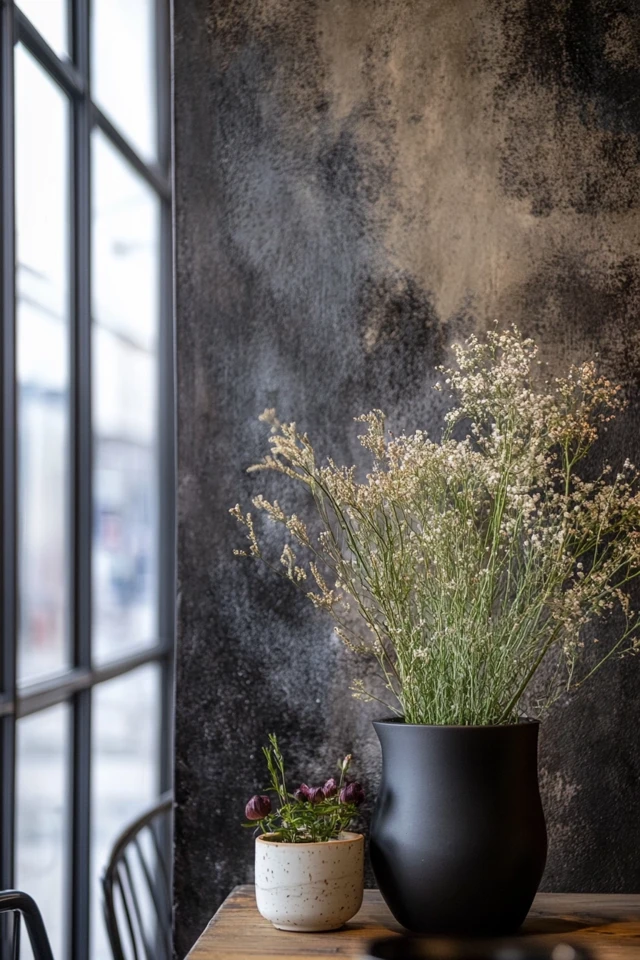Introduction
Combining rustic and industrial design elements is like pairing your favorite worn-in leather jacket with a sleek pair of boots—it’s the perfect blend of comfort and edge. I vividly remember working on a project for a family who wanted their living space to feel cozy yet contemporary. They loved the warmth of rustic decor but also craved the bold, edgy aesthetic of industrial design. The challenge? Finding the right balance between the two styles without letting one overpower the other. By mixing distressed woods, raw metals, and soft textures, we created a space that felt layered, inviting, and uniquely them.
Rustic and industrial design styles share a lot of common ground. Both embrace natural materials and imperfections, yet they differ in their execution. Rustic design leans toward warmth and tradition, while industrial design is cool, sleek, and modern. When combined thoughtfully, they can create a harmonious look that’s both timeless and trendy.
In this post, I’ll walk you through how to blend rustic and industrial elements seamlessly, whether you’re designing a living room, kitchen, or bedroom. With these tips and ideas, you’ll achieve a balanced aesthetic that feels cozy, stylish, and utterly unique.
Why Rustic and Industrial Are a Perfect Pair
1. Complementary Materials
Both styles embrace raw, natural materials. Rustic design favors warm, weathered wood and stone, while industrial design highlights metals, concrete, and brick. Together, they create a rich, textural contrast.
2. Contrast Creates Interest
Rustic elements soften the harshness of industrial materials, while industrial features add a modern edge to rustic spaces. This contrast keeps your design visually dynamic and engaging.
3. Timeless Appeal
Rustic and industrial styles are both rooted in history—one in rural tradition, the other in urban innovation. Combining the two creates a look that feels timeless yet relevant.
Key Elements of Rustic-Industrial Design
1. Material Mix
Blending materials is the foundation of rustic-industrial design.
- Wood: Choose reclaimed wood with visible grain and imperfections for a rustic touch.
- Metal: Incorporate steel, iron, or brass in furniture, light fixtures, and hardware for an industrial edge.
- Stone and Brick: Exposed stone or brick walls add texture and authenticity.
- Leather: Distressed leather furniture ties both styles together with its rugged, timeless appeal.
2. Color Palette
Stick to a neutral color palette with earthy undertones.
- Base Colors: Shades of gray, beige, white, and black.
- Accent Colors: Add warmth with deep browns, rusty oranges, or muted greens.
- Natural Tones: Let the natural hues of wood, metal, and stone shine through.
3. Furniture Styles
Choose furniture that combines rustic and industrial elements.
- Rustic Tables with Metal Bases: A wooden dining table with steel legs bridges both styles beautifully.
- Industrial Shelving Units: Metal and wood shelving offers a functional yet stylish storage solution.
- Distressed Leather Sofas: A leather sofa with a worn finish adds warmth and character.
4. Lighting Choices
Lighting is a key element in creating a balanced look.
- Industrial Fixtures: Opt for metal pendant lights, cage-style lamps, or Edison bulbs for an industrial vibe.
- Rustic Chandeliers: Wooden or wrought iron chandeliers add a rustic touch to larger spaces.
- Layered Lighting: Combine ambient, task, and accent lighting for a cozy yet functional design.
5. Textures and Soft Elements
Soften the hard edges of industrial design with rustic textures and textiles.
- Rugs: Use natural fiber rugs like jute or wool to add warmth to concrete or wood floors.
- Throw Blankets and Pillows: Layer your seating with soft, textured throws and pillows in neutral tones.
- Curtains: Choose linen or cotton curtains to soften large windows or metal hardware.
Room-by-Room Rustic-Industrial Ideas
1. Living Room
- Key Features: A reclaimed wood coffee table paired with a steel-framed sofa.
- Accent Tip: Add an industrial floor lamp with an Edison bulb for cozy lighting.
- Texture Tip: Use a woven rug and a leather armchair to add warmth.
2. Kitchen
- Key Features: Exposed brick walls, wooden open shelving, and a metal range hood.
- Accent Tip: Use rustic wooden stools with metal legs at the kitchen island.
- Texture Tip: Add warmth with a butcher block countertop or a stone backsplash.
3. Bedroom
- Key Features: A reclaimed wood headboard and industrial-style bedside tables.
- Accent Tip: Use vintage-style metal lamps on each side of the bed.
- Texture Tip: Layer the bed with soft linens, a chunky knit throw, and patterned pillows.
4. Bathroom
- Key Features: A concrete sink basin paired with a wooden vanity and black metal fixtures.
- Accent Tip: Add a rustic ladder for towel storage.
- Texture Tip: Use a woven bath mat or a stone accent wall for warmth.
5. Dining Room
- Key Features: A large wooden dining table with industrial metal chairs.
- Accent Tip: Hang a metal pendant light or chandelier above the table.
- Texture Tip: Use fabric placemats or a jute table runner for softness.
Picture Gallery
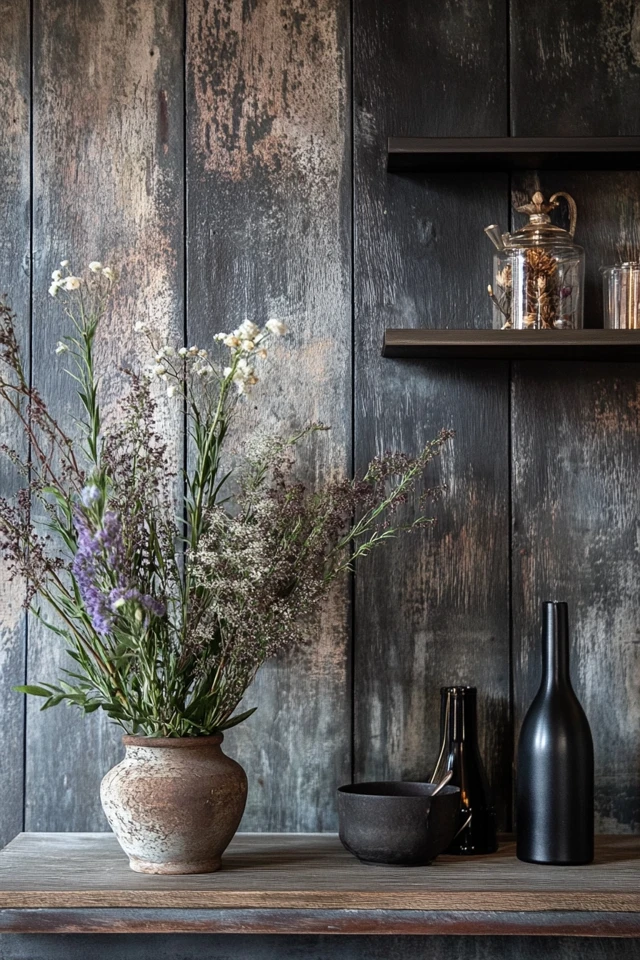
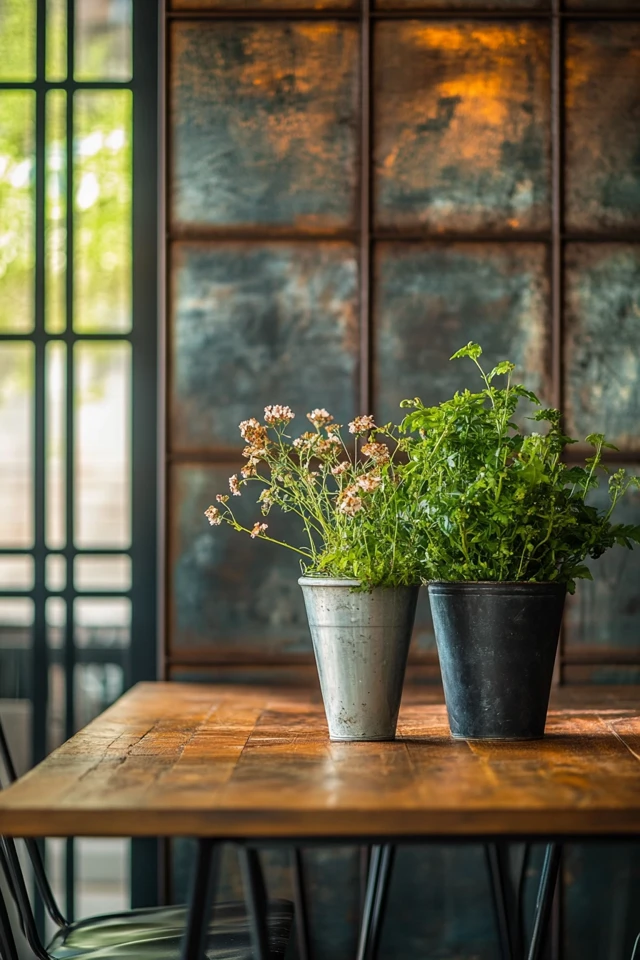
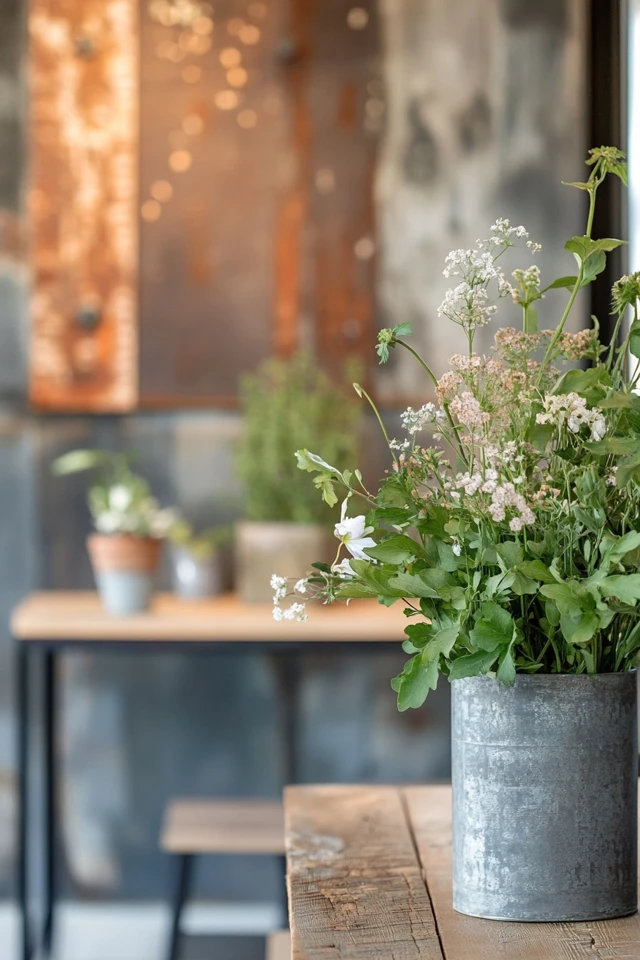
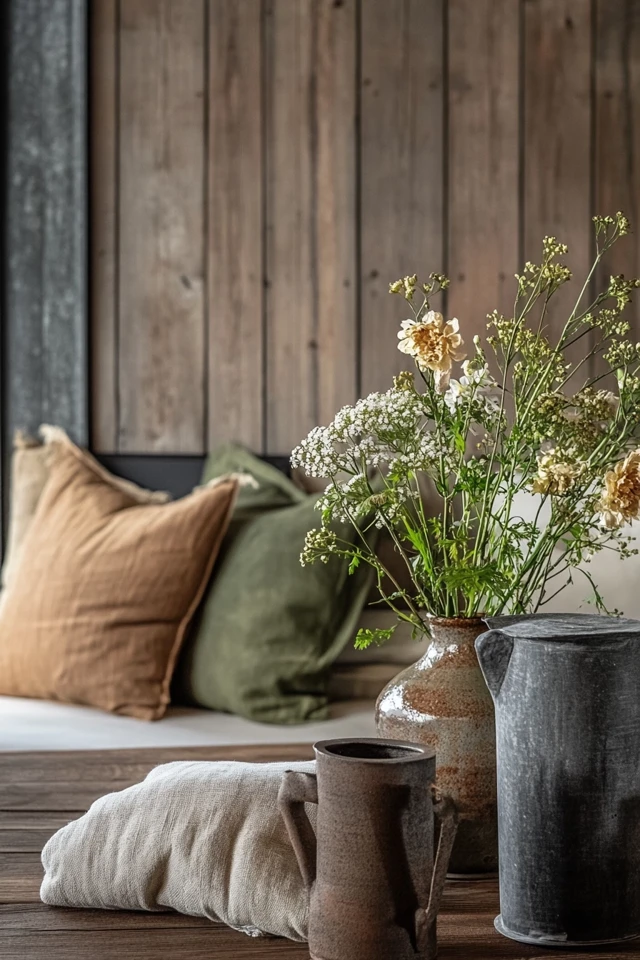
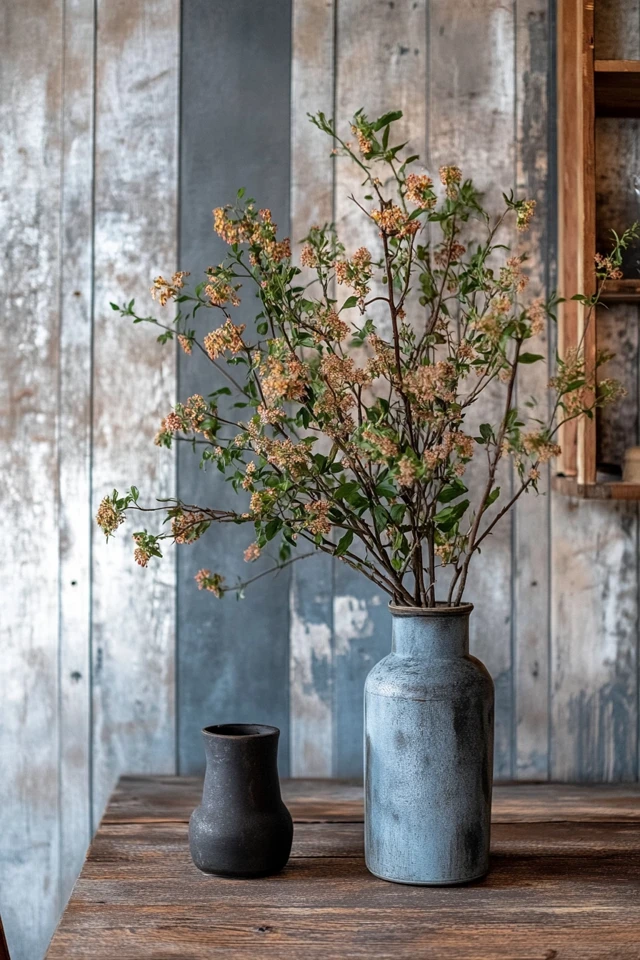
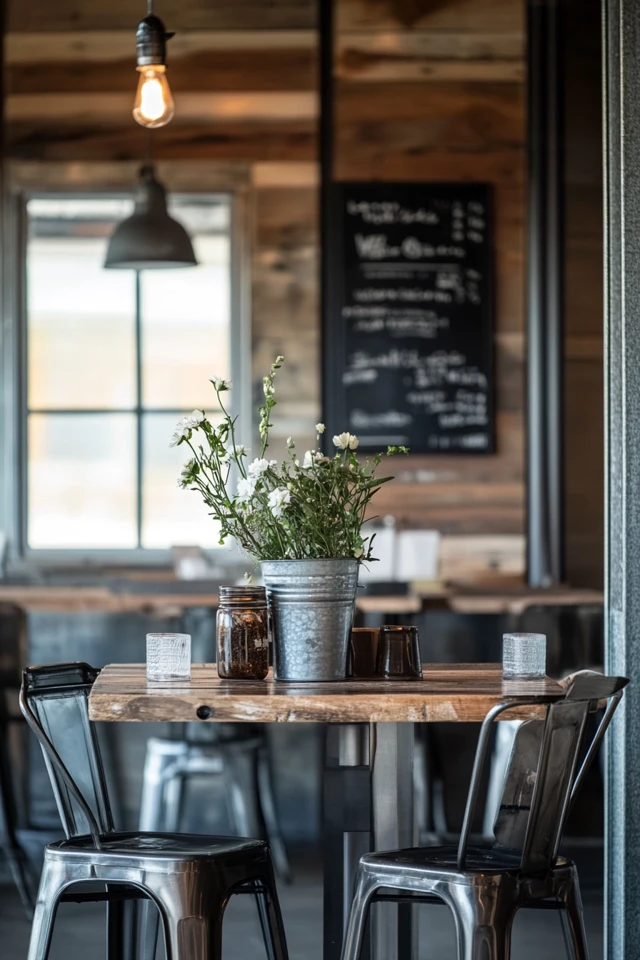
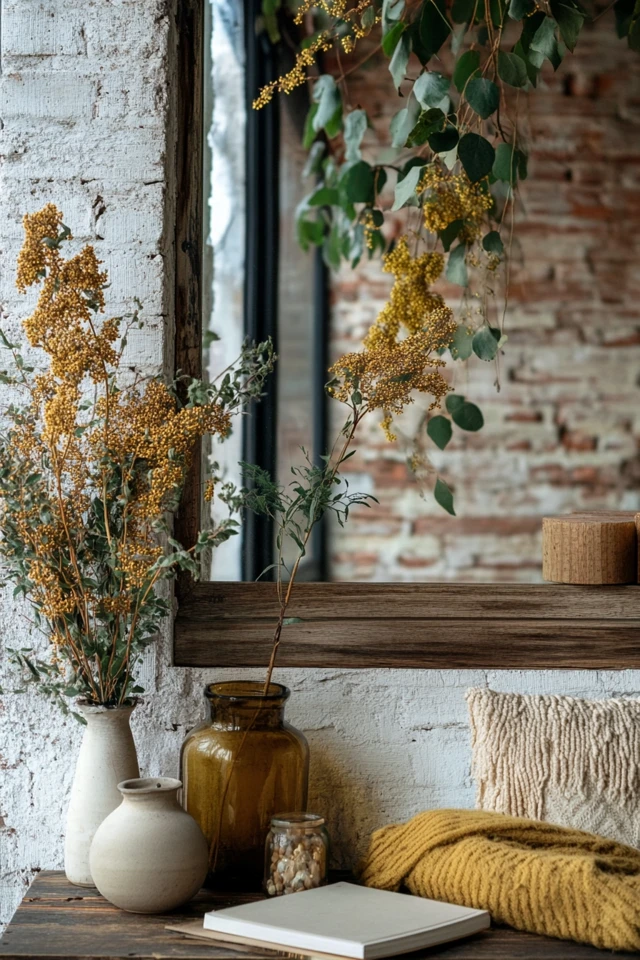
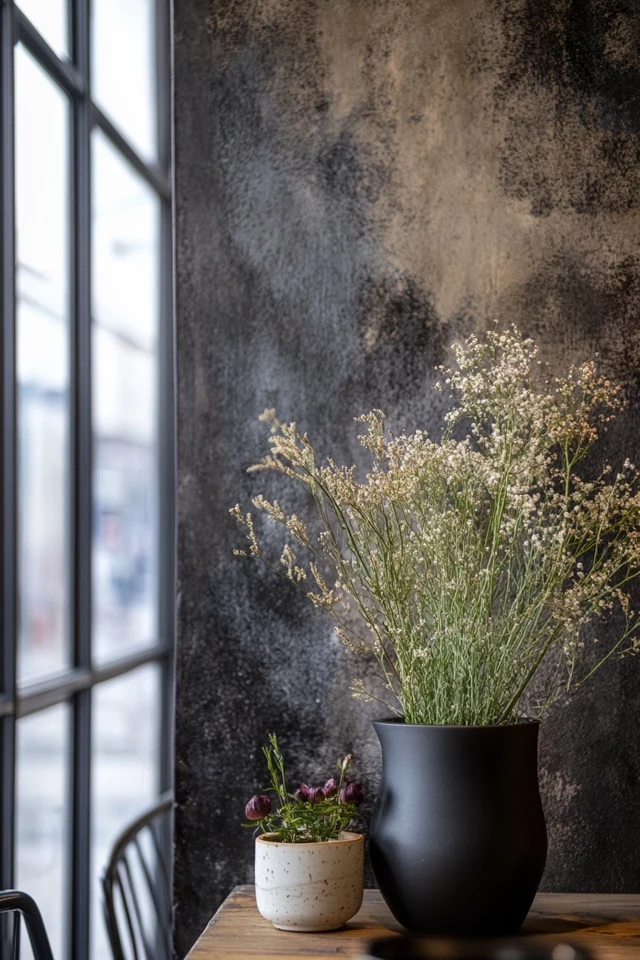
Tips for Achieving Balance
1. Start with a Neutral Base
Begin with neutral walls, floors, or furniture. Add rustic or industrial elements as accents to create a layered look.
2. Layer Textures
Balance smooth, industrial surfaces like metal or concrete with softer textures like wood, leather, and fabric.
3. Play with Proportions
Combine chunky, rustic furniture with sleek, industrial lighting or decor for a balanced aesthetic.
4. Add Greenery
Plants soften the hard edges of industrial design and bring life to rustic interiors. Use simple planters in metal or terracotta finishes.
5. Incorporate Vintage Elements
Vintage decor, like old factory signs or antique tools, adds authenticity to the rustic-industrial style.
Conclusion
Combining rustic and industrial elements is all about balance. By blending the warmth and charm of rustic design with the sleek, raw appeal of industrial decor, you can create spaces that feel inviting, stylish, and timeless.
Whether it’s a living room with a reclaimed wood coffee table and metal shelving, or a kitchen with exposed brick and rustic stools, the key is to let each style shine while working in harmony. Don’t be afraid to experiment and make the design your own—this fusion style thrives on creativity and personality.
In my own experience, the best rustic-industrial spaces are the ones that feel lived-in and personal. So mix and match textures, play with proportions, and add meaningful touches to make your home uniquely yours.
FAQ
1. What are the main differences between rustic and industrial design?
Rustic design emphasizes warmth, natural materials, and traditional elements, while industrial design focuses on raw, urban materials like metal, concrete, and brick with a modern edge.
2. Can I use rustic and industrial elements in small spaces?
Absolutely! Use lighter woods and metals to keep the space feeling open, and focus on multifunctional furniture.
3. What lighting works best for a rustic-industrial look?
Metal pendant lights, Edison bulbs, and wrought iron chandeliers are great choices. Combine with layered lighting for a cozy atmosphere.
4. How can I make a rustic-industrial space feel cozy?
Add soft textures like rugs, throws, and pillows, and incorporate warm lighting and natural elements like wood and greenery.
5. Can I mix rustic and industrial elements with other styles?
Yes! Rustic-industrial pairs well with modern, farmhouse, and even bohemian styles. Use decor elements to bridge the gap between styles.

